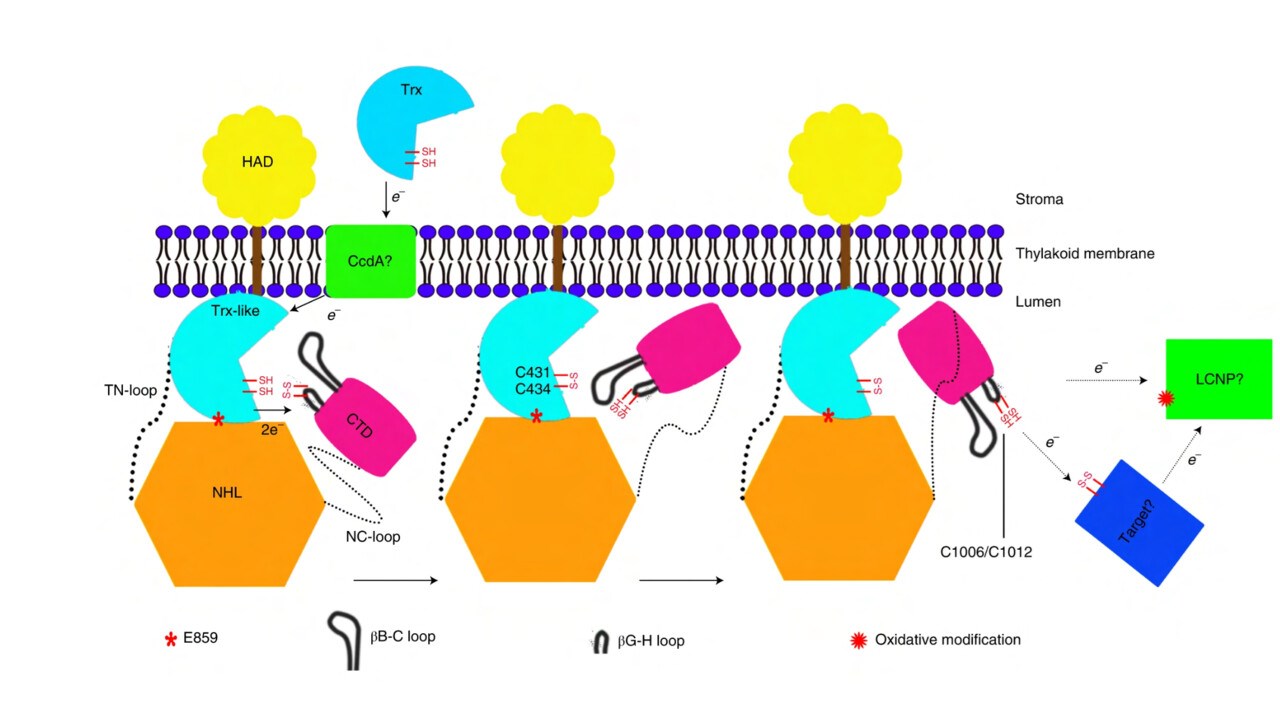Structure of Arabidopsis SOQ1 lumenal region unveils C-terminal domain essential for negative regulation of photoprotective qH. Nat. Plants. 2022 Jul;8(7):840-855. Yu G#, Hao J#, Pan X#, Shi L, Zhang Y, Wang J, Fan H, Xiao Y, Yang F, Lou J, Chang W, Malnoë A*, Li M*.



